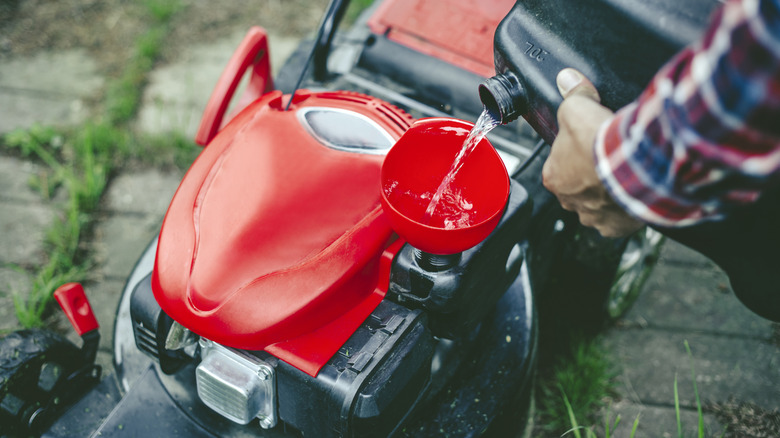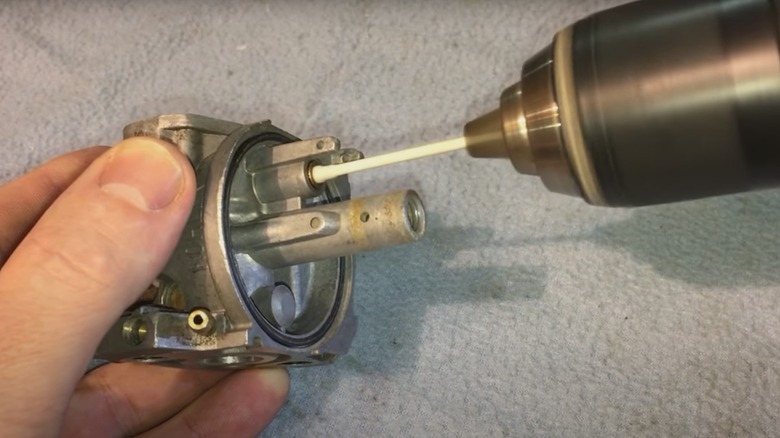One Reason Why Your Lawn Mower Might Be Leaking Gas (& How To Fix It)
There's nothing quite like the look of a freshly cut lawn to give your home a polished feel. But a manicured lawn that's the envy of any homeowner requires a lot of care, and at the heart of it is your lawn mower. Unfortunately, it's not uncommon for lawn mowers to stop functioning as planned, throwing a wrench in your lawn maintenance schedule. Gas leaks are a common issue, typically due to grime building up in your lawn mower's carburetor float and needle valve. But before you start thinking that it's time for a new lawn mower, you'll be happy to know that fixing this problem could be as easy as cleaning the area with a cotton swab.
In addition to wasting fuel and making your lawn mower less efficient, gas leaks can be dangerous. The flammable gas going rogue on your lawn can cause fires, as well as release fumes that are toxic to inhale. But there's no need to panic; with some patience, a magnifying glass, a cotton swab, cleaning solution, and common tools like screwdriver and drill, you can quickly make your lawn mower safe to use again. Then, if you're still worried about it, you can take some precautions to avoid gas leaks in the future and keep your lawn mower in tip-top shape.
How to fix a gas leak on your lawn mower's carburetor
Inside your lawn mower's carburetor, the float and needle valve area is what keeps the fuel line attached to the carburetor. What you'll find here is a rubber-tipped needle and a small pipe (or "seat") that the needle goes into. The carburetor valve works by plugging the needle into the seat once the bowl is full, shutting off gas flow. When there's buildup on the seat or on the needle, it can prevent the needle from rising and sealing properly in the seat— cue the dreaded gas leaks!
To quickly solve the situation, detach the carburetor from your lawnmower and find the float and needle valve. Grab a magnifying glass to better inspect both the needle tip and the seat that it rests in. If there's grime on the needle, lightly brush it with a cotton swab dipped in a cleaning solution like WD-40 to remove it. If the dirt has built up in the needle seat, pull some fuzz off the cotton swab to make it better fit inside the narrow seat, spray it with WD-40, and push it inside the seat, twisting to clean.
If the buildup is a bit stubborn, take a power drill and attach the cotton swab to it before inserting it into the seat and running it on a low setting for a few seconds. This will provide a deep cleaning effect, making sure you reach the tiniest bits of dirt inside. To make sure your carburetor cleaning expedition remains a one-time thing, consider using fuel stabilizer. Fuel stabilizer's purpose for your lawn mower is to reduce gasoline breakdown, preventing any buildup in the float and needle valve from gas residue and making sure it doesn't get stuck open again.

